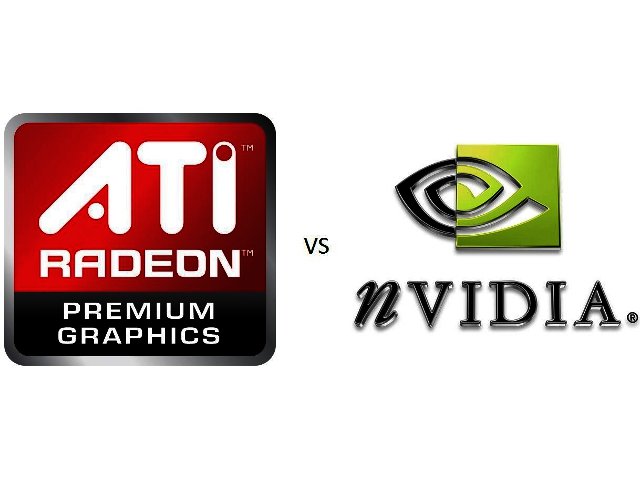Nvidia vs ATI graphics report
By Johan Keyter 26 July 2010 | Categories: news
ATI and Nvidia are the two great titans of the GPU (graphics processing unit) market, and also two of the greatest rivals in the technology world.
Chances are strong that if you’re looking for a new GPU you’ll have to choose between these brands and, if you aren’t a hardcore supporter of one or the other, you’ll have a tough decision to make.
Background
Nvidia, founded in 1993 is one of the leaders in GPU manufacturing, gaining huge popularity in 1999 when they introduced the Geforce 256, the first card to introduce a card with on-board transform and lighting (T&L). Over the years the company has gained much mainstream support producing such legends as the Geforce 4 and GT series cards.
ATI is older than Nvidia, founded in 1985 and producing graphics cards for PC makers such as IBM. The company was bought by AMD in 2006 and since then has been renamed to AMD Graphics Product Group, though still producing cards under the ATI Premium Graphics name.
A perfect showcase of the intense rivalry between the two companies can be seen in the fact that the PlayStation 3 uses an Nvidia chip while the Xbox 360 opted for ATI.
Instead of getting into a heated debate about which chip is best, we’re going to have a showdown between the two latest and greatest cards from both manufacturers.
ATI
On the ATI side of the fence we find the ATI Radeon HD 5970, officially the fastest graphics card on the planet.
The card does make use of dual GPU’s though, meaning it can’t be classified as a single unit. Utilizing the power of dual GPU’s equips the card with a total of 4.3 billion 40 nm transistors and the latest GDDR5 memory interface to deliver the best HD gaming experience.
It features DirectX 11 and Open GL 3.2 support and ATI’s eyefinity technology allows users to utilize up to three displays simultaneously to really get lost in the action.
Support for multiple GPU’s is also available, with ATI CrossFireX technology able to support up to four cards (your motherboard supporting it is another case).
If one is looking for the fastest single GPU ATI card the HD 5870 steps to the fore. This powerful card supports 2.15 billion 40nm transistors, uses GDDR5 memory and is also DirectX 11 compatible.
ATI’s eyefinity technology can be found on the card which also supports OpenGL 3.2 as well as high definition display technology.
The ATI HD 5970 sells for around R7000 locally while the HD 5870 can be found for about R5000.
Nvidia
On the other side of the fence, Nvidia’s powerhouse card at the moment is the NVIDIA GeForce GTX 480. Utilizing PhysX technology as well as the power of stereoscopic 3D it’s definitely not lying down in the face of the HD 5970.
The GTX 480 is the fastest single GPU unit on the market today, outclassing the rest of the competition by a long shot. One of these cards will set you back to something along the tune of R6000 locally.
The GTX 480 has 3 billion 40 nm transistors, supports OpenGL 4.0, Shader Model 5.0 and of course, DirectX 11.
And Nvidia’s PolyMorph Engine with distributed tessellation makes it possible for game developers to create more detailed characters and terrain in games, bringing users a much more realistic experience.
A very neat, albeit very expensive setup is linking two GeForce GTX 480 cards using Nvidia’s SLI configuration. With this users can project across three different displays, and if you’re also using Nvidia’s 3D vision technology you’re in for one awesome visual rollercoaster.
DirectX 11
A crucial aspect to both these cards is how well they work with the latest version of DirectX.
For those that don’t know, Microsoft’s DirectX is an assortment of API’s (application programming interfaces) which makes it possible for Microsoft platforms to handle tasks like multimedia playback and especially video game programming.
Over the years Microsoft has been updating and releasing new versions of DirectX to keep its operating systems up to date with the newest evolutions in game design.
DirectX 11 is the most recent update, and was released with Windows 7. Some of the advanced features in DirectX 11 include Tesselation, which creates smoother curved surfaces, resulting in more lifelike images.
Multi-threading is also supported, allowing game developers to take full advantage of the power of multi-core CPU’s. By utilizing the full potential of your CPU multi-threading allows faster frame rates and increased visual detailing.
The Windows 7 and Windows Vista (with SP 2) operating systems supports DirectX 11, another good reason to upgrade that XP machine.
The verdict
When looking at sheer power, it’s easy to see that the ATI HD 5970 is the better of the two cards. But when looking at technology the Nvidia GTX 480 makes a comeback thanks to its excellent tesselation support with the PolyMorph engine.
To tell the truth, both of these cards are so immensely powerful (and expensive), that the human eye can’t even tell the difference between them. They are so close to each other in terms of power that either one is able to steal the graphics crown. In the end it comes down to price and loyalty most of the time, even in the office we’re split about which manufacturer is better. Rest assured though that both ATI and Nvidia are constantly challenging each other, which makes both cards worth your while to purchase.
We hope this article has shed some light on the world of GPU’s, if you’re looking to upgrade your GPU we recommend taking a look at the Prophecy Shop, as they frequently sport some of the best local deals on GPU’s around.
Most Read Articles

Have Your Say
What new tech or developments are you most anticipating this year?



